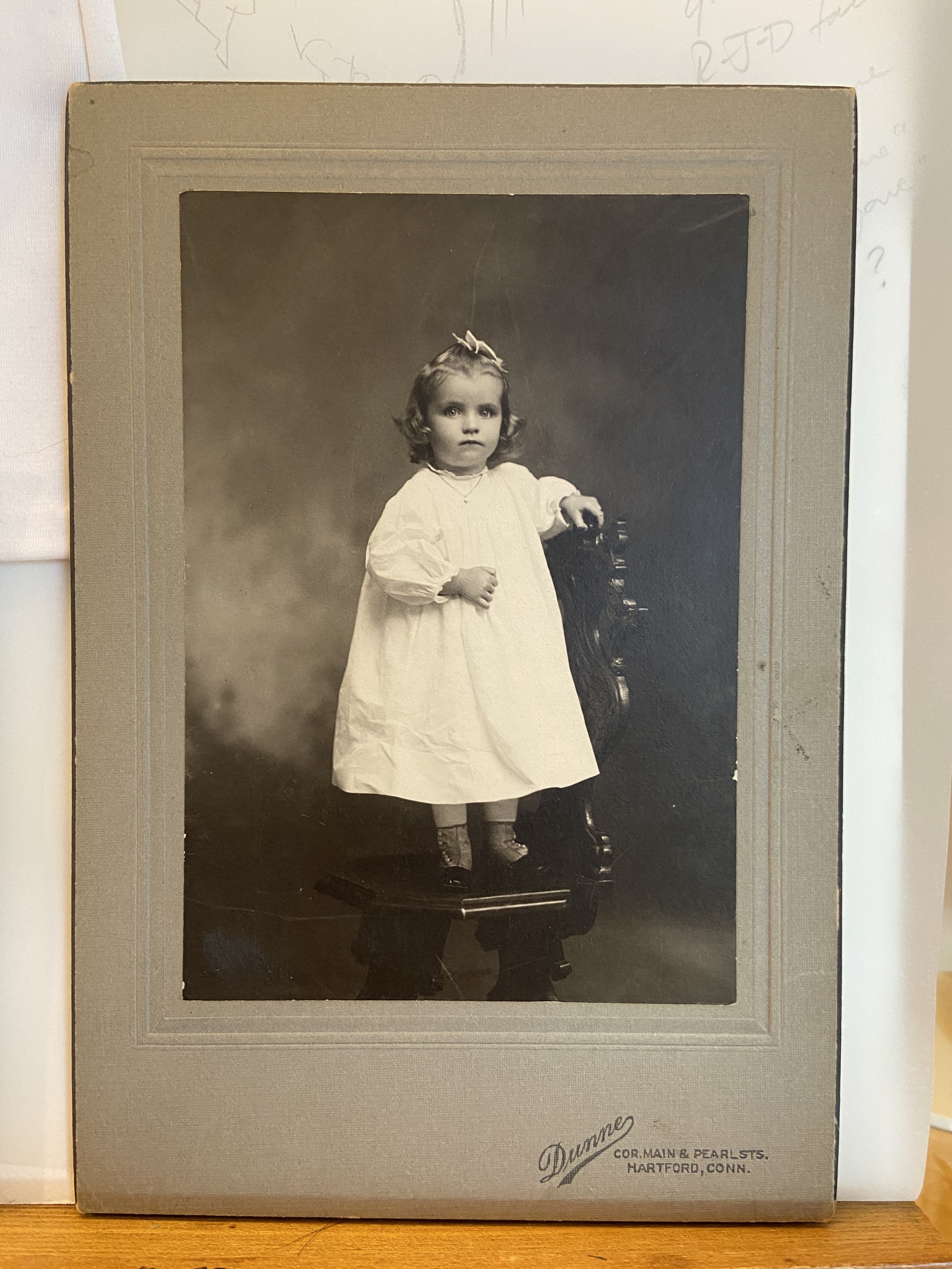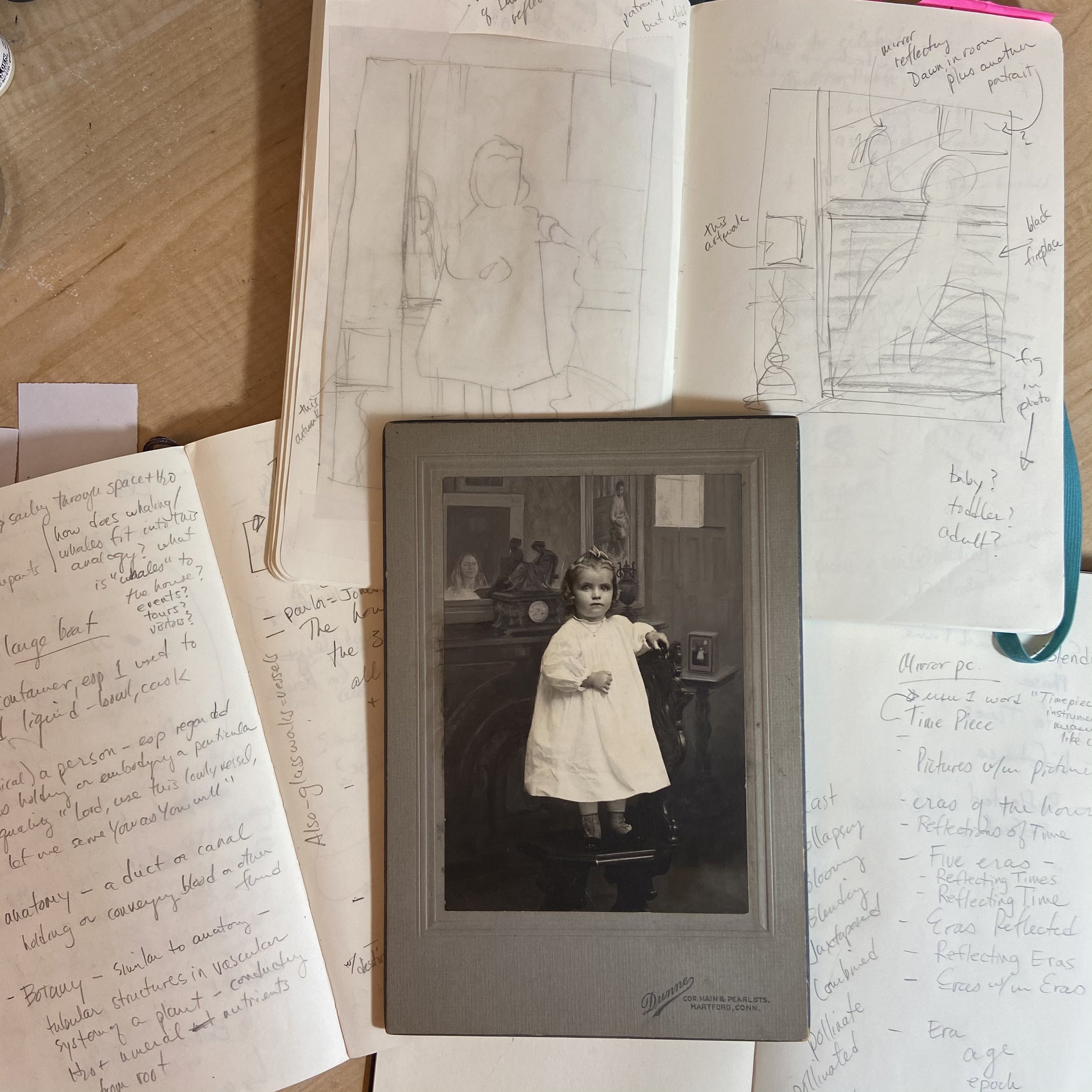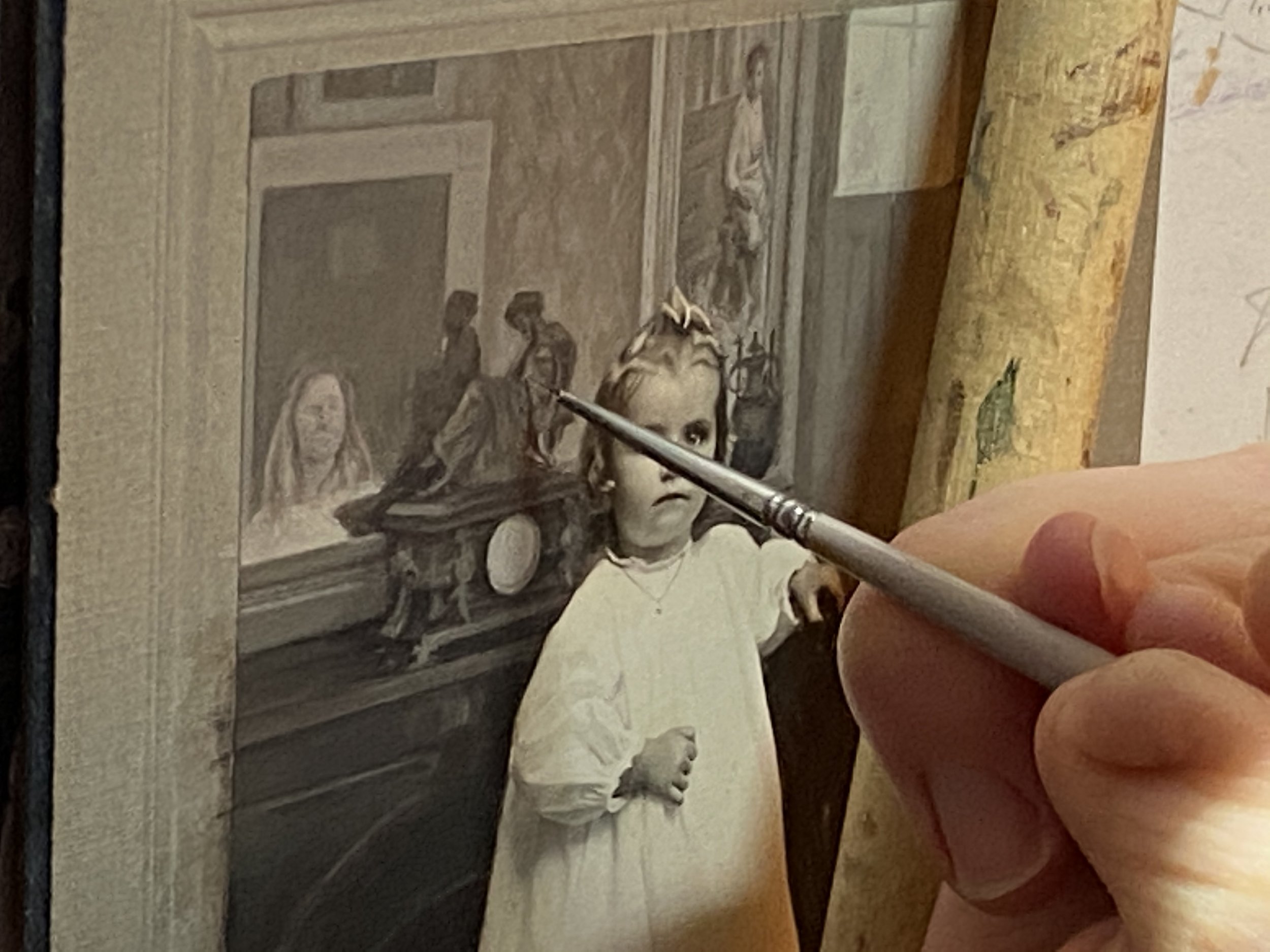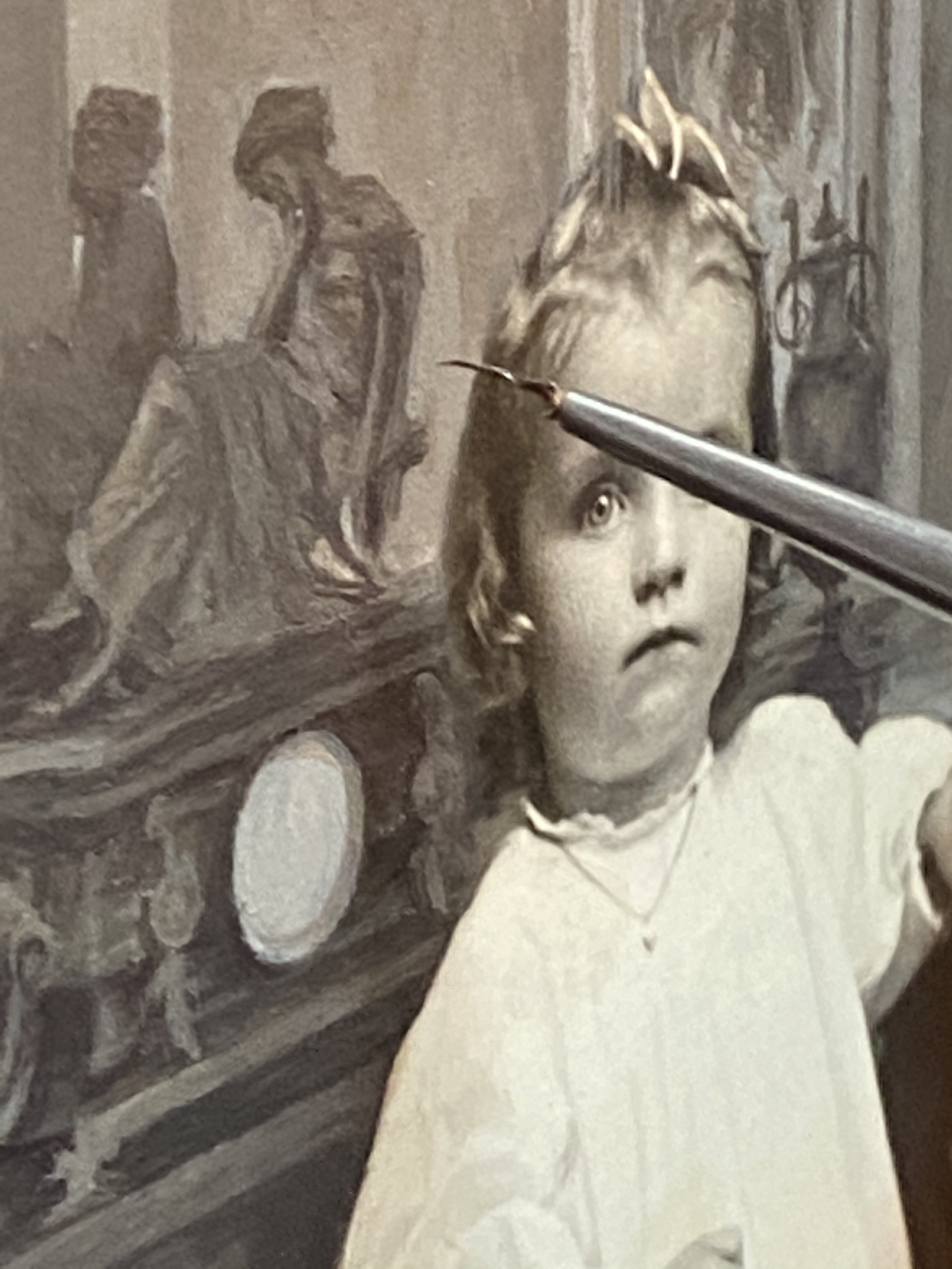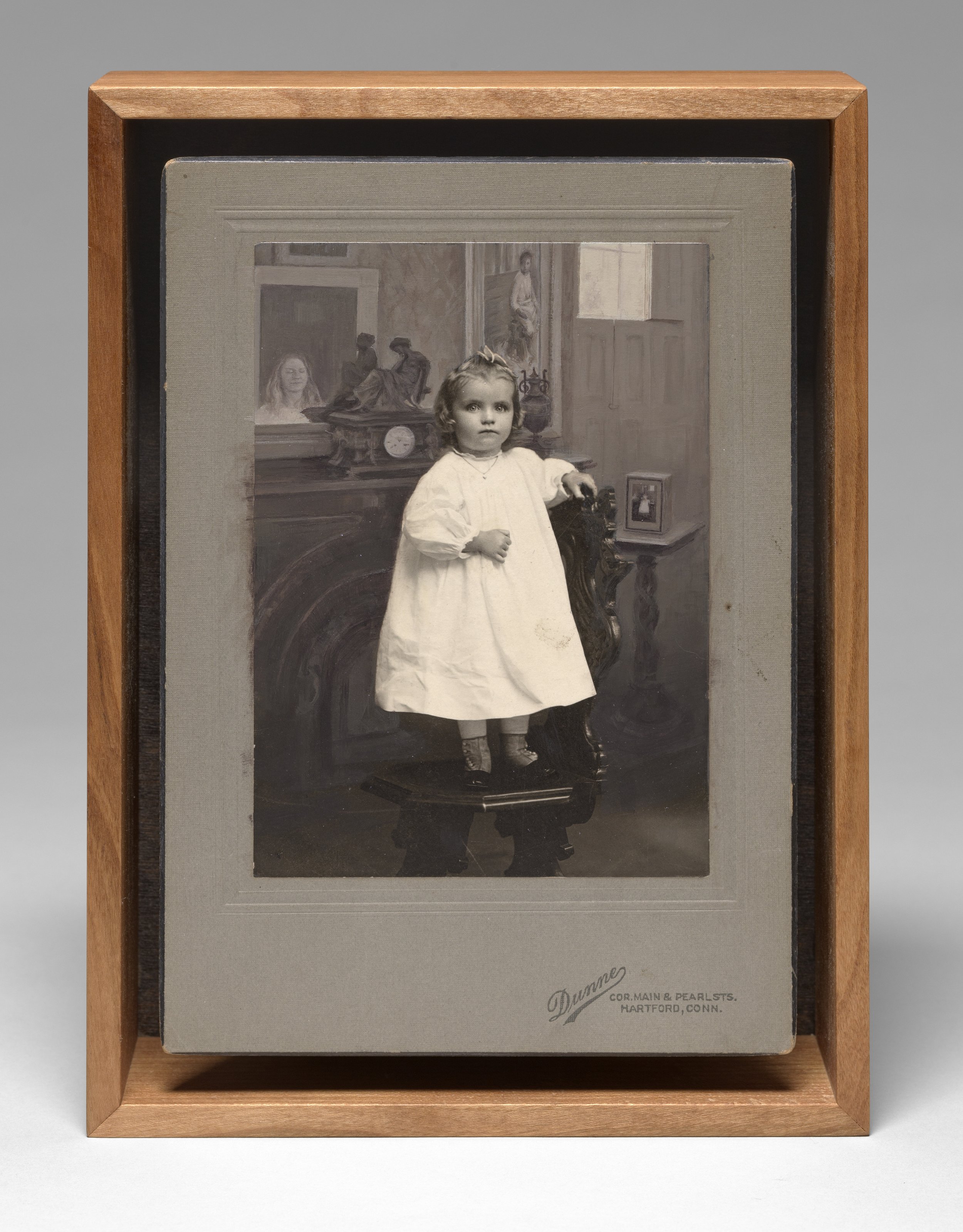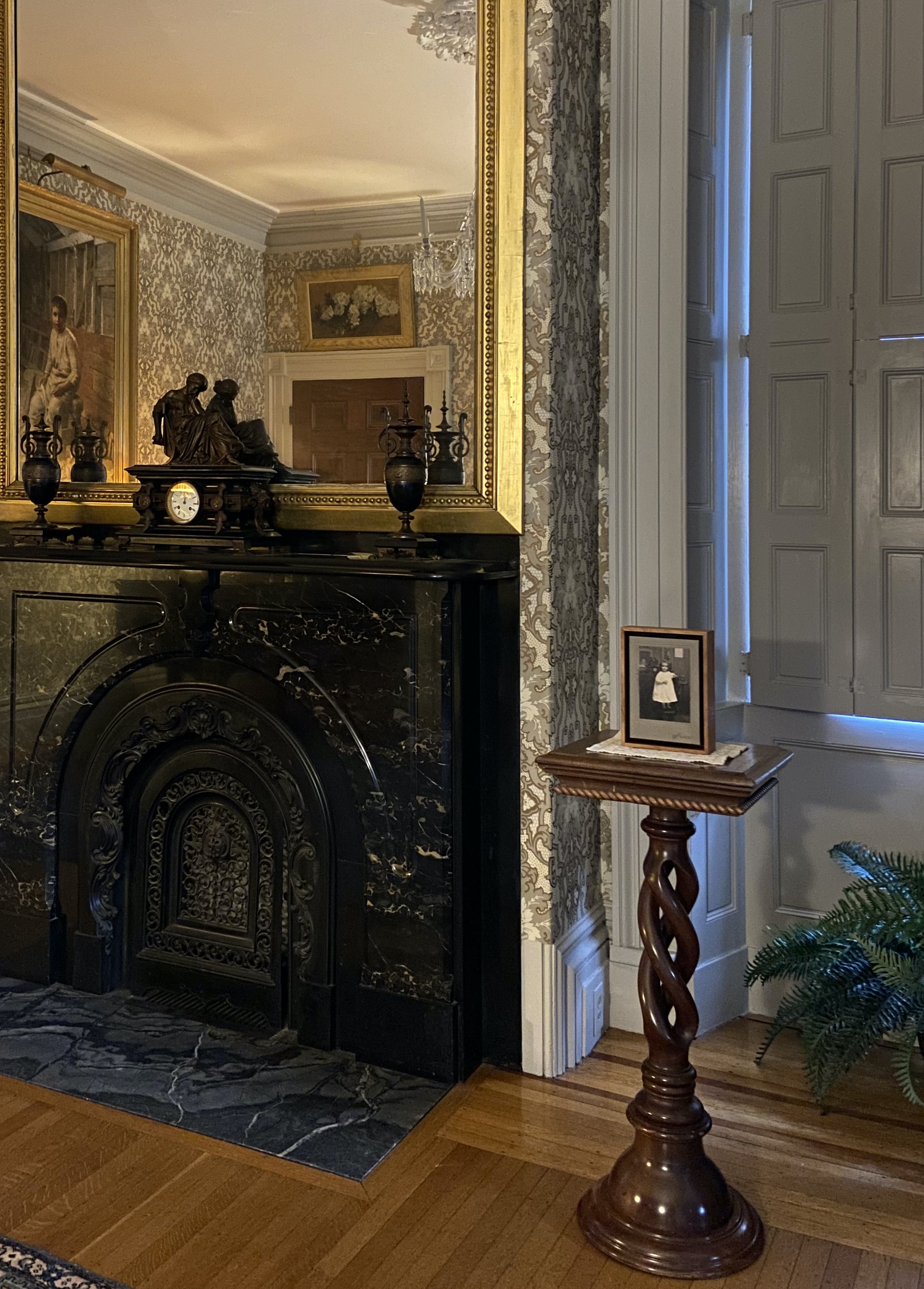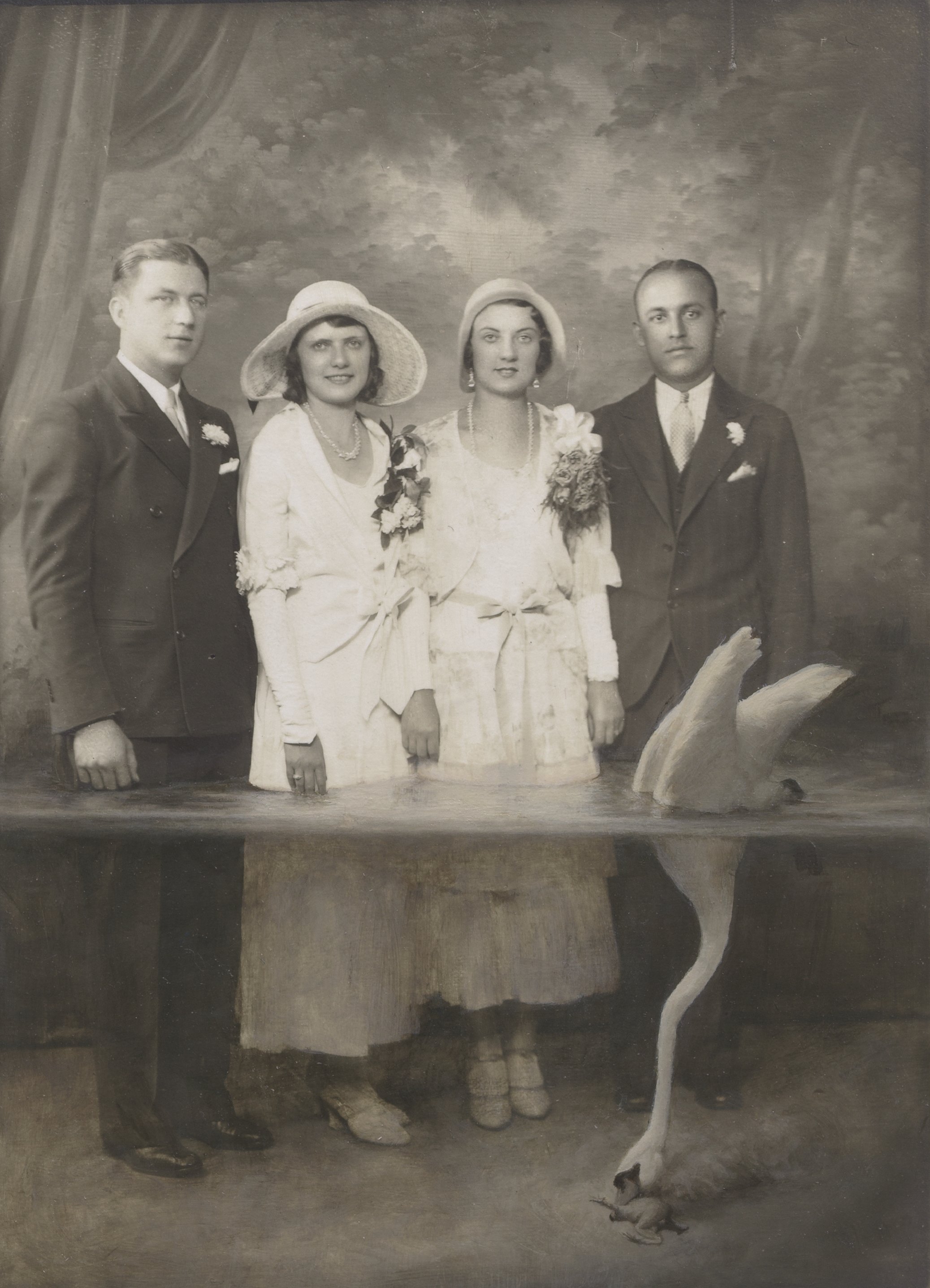Berkshire Artist Spotlight: Laura Christensen
With the support of Assets for Artists, CARE SYLLABUS put out a call in the Fall of 2021 for local artists to share work exploring the different meanings of care in their lives. Our second submission in this series is a reflective essay, and images of work, by visual artist Laura Christensen, who carefully alters antique photographs to create “unexpected combinations of past and present, object and image, photograph and painting.” Read more of Christensen’s reflections below.
Three works by Laura Christensen, showing ‘before and after’ views of each photograph prior to, and following, their alteration and transformation. All images courtesy the artist.
How do we know if an action is full of care? Is there a prescription for what caring looks like in each situation? Or is it more open-ended and complex than that?
These questions come up in my art practice through its historical, cultural, and material contexts.
I collect vintage studio portraits to use in my art. Photographers created these sepia toned and subtle black and white images when clients posed before a camera, and a shutter opened and closed, over a century ago.
Early photographic portraits were originally collected by families and friends. They were typically displayed in parlor cabinets to share with visitors. Now, many of these cabinet cards are boxed up in attics and basements, perhaps even your own, and in antiques and thrift stores.
Portraits of cultural importance to historians, anthropologists, and costume designers might be archived in clean humidity-controlled containers or rooms, taken out only for study or rare exhibitions at museums and galleries.
Old photographs in my collections are handled quite differently - not carelessly, but with a different sort of care. I alter original photographic objects by painting directly onto the surfaces of old photographs.
Above: A gallery showing the making of Laura Christensen’s work Picture Time RJD, 2021. Vintage photograph, acrylic paint, cherry wood, 9 x 6 ½ x 3 inches. All images courtesy the artist.
Instead of segregating the portraits into archives of the past, I bring them along on a journey that recovers and celebrates, but also reinvents each photograph. I collaborate with the objects to create something new with the old.
Of course, I could scan and manipulate the images digitally, but that seems cold and detached. Instead, I partner with the whole thing, the photograph as a century-old object, as well as the poignant appearances of past lives. I work with each actual object, not digital shadows of the original.
It can be controversial to alter an antique, especially when it contains an emanation of a person who once lived. When my first altered photographs were viewed during a graduate school critique, you could have heard a pin drop, and not out of appreciation.
Laura Christensen, Forgotten, Remembered, and Imagined (after Stephen C. Warren’s Memory Ware Tower, Bennington Museum), 2015. Acrylic paint on vintage photograph, 8 x 5 inches. All images courtesy the artist.
Laura Christensen, Half Full, 2018. Vintage photograph, acrylic paint, velvet, and cherry wood, 7 ½ x 5 ¼ x 2 inches. All images courtesy the artist.
My fellow graduate students and our professors stood serious and silent as they inspected the vintage portraits I had altered with sand paper and pencil. In one, a snake or eel appeared to slither under the collar of a prim-looking 1950’s woman. In another, a young businessman had been given a clown nose and loose swirling hair.
These first audiences to my altered photographs were offended. They wondered with concern what the businessman’s granddaughter would say if she sees what I’d done to her grandfather? Plus some people in these photos were probably dead by now. We don’t even know who they are!
Through this surprising ordeal I began to comprehend the sentimental and cultural value of old photographs. With growing awareness, I saw how easily we conflate an image of something with the real thing. Of course, artist René Magritte and others realized this a century ago. So I studied and coveted the word palimpsest. My graduate thesis paper and exhibition was titled, Excavations and Allegories. And I experienced how context and transformation can powerfully affect the meanings and imaginations evoked by an object.
That all happened back in the mid 1990’s.
Since then I’ve developed techniques for painting on recovered antique photographs, which have become both canvas and inspiration for my work. Like family and friends of the depicted, like historians and conservators, I pay extraordinary attention to each photograph, yet with a different eye.
Laura Christensen, Swan Dive, 2018. Acrylic paint on vintage photograph, 8 x 5 inches. All images courtesy the artist.
Laura Christensen, Silhouettes, New Bedford, Mass., 2020. Vintage photograph, acrylic paint, gesso board, 7 ½ x 5 x ⅛ inches. All images courtesy the artist.
I understand how the people are likely now dead, but their image from that moment continues to exist, like the delayed rays of a star. I study surface shapes and tones written by light and chemical reactions, the patterns alluding to specific people and unique gestures and expressions. I explore composition and texture. I notice bends in the paper, faded sections of an image. I imagine hints of stories, fantasies, and dreams.
Laura Christensen, Constance Chronoskiewicz, Master of the Meanwhile, 2017. Acrylic paint on vintage photograph, 7 x 5 inches. All images courtesy the artist.
Carefully, I plan and mix colors to match distinctive tones and hues. I paint to cancel parts of images and conjure additional illusions of possible and impossible scenarios, things a camera did not, or could not have recorded.
The altered photographs present seamless, yet unexpected combinations of past and present, object and image, photograph and painting.
Within my artwork, careful curiosity, imagination, and inclusive collaboration bring old photographs from general obscurity to a transformed identity.
Perhaps there’s something there for all of us - a caring choice to look beyond appearances and cultural expectations, to be curious and collaborative, and a choice to expand notions of what care can look like.
Learn more about Laura Christensen at the artist’s website.

